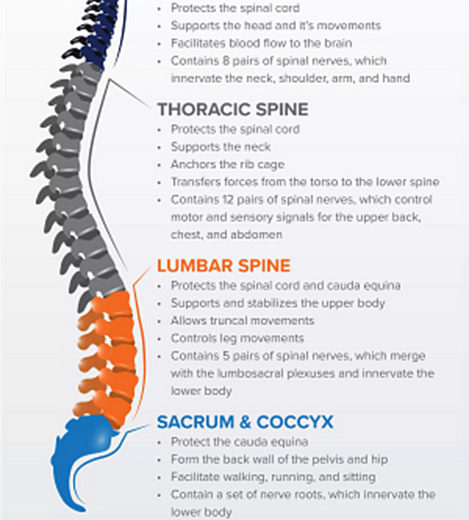by: Marie Serrado
In part 1 of "Meeting the Mark: Essential Requirements for Meaningful Testing of
Lumbar Functions," we discussed the essential requirements for conducting meaningful
testing of lumbar functions. In today's blog post, we will dive deeper into understanding
how to conduct meaningful testing of the lumbar region.
1. F. Counterweighting the Torso Mass
Due to the mass of the torso, either during testing or exercise of the lumbar-extension muscles, it may produce anywhere from a small amount to a few foot-pounds, and in some cases, as much as a hundred foot-pounds of torque. Torque is a measure of the force that can cause an object to rotate about an axis. This means that torque levels change constantly during meaningful testing or exercise, which can affect the muscles without proper counterweighting.
2. G. Positioning of the Head and Arms
The head and arms must be positioned appropriately during both testing and exercise.
The specific position of the head and arms does not significantly affect the results; what
truly matters is when you initiate the testing and exercise. The movement of the head
can influence the torque generated by the body mass, and even slight changes can lead
to a significant impact, potentially exceeding 200 percent.
This means that maintaining a consistent and stable head and arm position throughout
the entire testing and exercise process is crucial to ensure accurate and reliable results.
Any deviations in the positioning could introduce substantial variations in the torque
measurements and potentially compromise the validity of the data collected.
3. H. Measurement of Force( Torque)
When testing muscular strength, the measurement involves evaluating the forces
generated by muscular contractions. However, since it is not possible to insert a strain
gauge directly between the muscle and its related tendon, the measurement is
conducted using force, specifically torque. Torque is typically expressed in foot-pounds
or inch-pounds and comprises two components: force and movement, which are
determined by the lever, lever-arm, or moment-arm involved in the movement.
The torque can vary, ranging from having high force to no force at all. However, it is
crucial to remember that when attempting to measure the strength of a muscle, one
must consider the actual involvement of torque measurements.
4. I. Correlation of Torque with Accurate Measurements of Position
It can be meaningless to gather accurate torque measurements unless they are aligned
with equally accurate measurements of position, as changes in position can
significantly impact strength outcomes. Even a minor alteration in strength can lead to
changes in position, resulting in a substantial increase or decrease in strength. Notably,
during torso rotation, a subject's strength may change by more than one-thousand
percent.
This suggests that precise and synchronized measurement of both torque and position
is crucial to obtain meaningful data during torso rotation testing. Failure to consider and account for these changes can lead to unreliable results and misinterpretations of a subject’s strength capabilities during the movement.
5. J. Reduction of Friction in the Testing Machine
There is never enough friction, nor can you remove friction entirely from any machine,
but you can reduce it to a low level. Some testing machines along with some exercise
machines have a lot of friction that conducting meaningful test results with a weak
subject is impossible.
6. K. Repeatability of Test Results
Even if you diligently follow all the necessary steps, there might be instances where you
obtain minimal or no significant results. Even achieving a precise degree of repeatability
does not guarantee accurate or meaningful test results. Repeatability itself serves as a
test of the subject’s cooperation in a way, as it involves conducting two tests a few
minutes apart. When these two tests display noticeable differences, it indicates that the
subject may not have been fully cooperating.
All the equipment required for a safe and accurate testing procedure, as well as proper
rehabilitative exercise, should encompass various functions and features. Some of
these functions and features include, but are not limited to:
1. Totally-specific exercise, positive-negative
2. Strength testing
3. Work measurements
4. Power measurements
5. Recovery Testing
6. Effective Testing
7. Direct Resistance
8. Computer Control
9. Acceleration
10. Safety
11. More
Safety is of paramount importance, and without it, nothing else matters. It should be a
primary concern to ensure the safety of individuals undergoing testing and exercise
procedures
Conclusion:
In conclusion, conducting meaningful testing of lumbar functions requires careful
attention to essential requirements and considerations. Torque measurements play a
crucial role in evaluating muscular strength, but it is vital to align these measurements
with accurate position data to avoid potential inaccuracies. Additionally, subject
cooperation and safety are paramount throughout the testing process.
References:
1. Jones, A., Pollack, M., Graves, J., Fulton, M., Jones, W., MacMillan, M., Baldwin,
D. D., & Cirulli, J. (1988). Safe, specific testing and rehabilitative exercise for the
muscles of the lumbar spine. Sequoia Communications.




